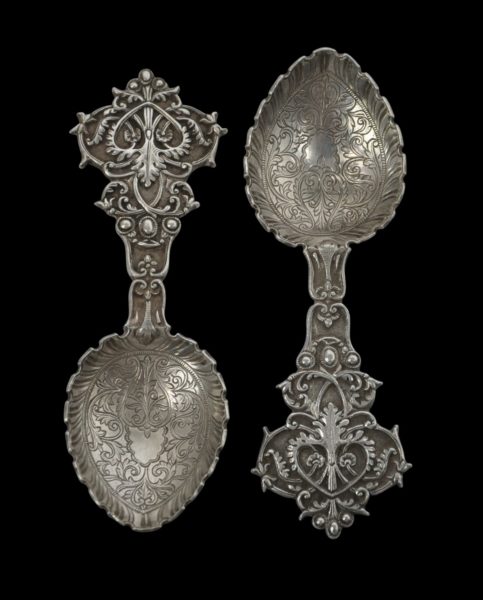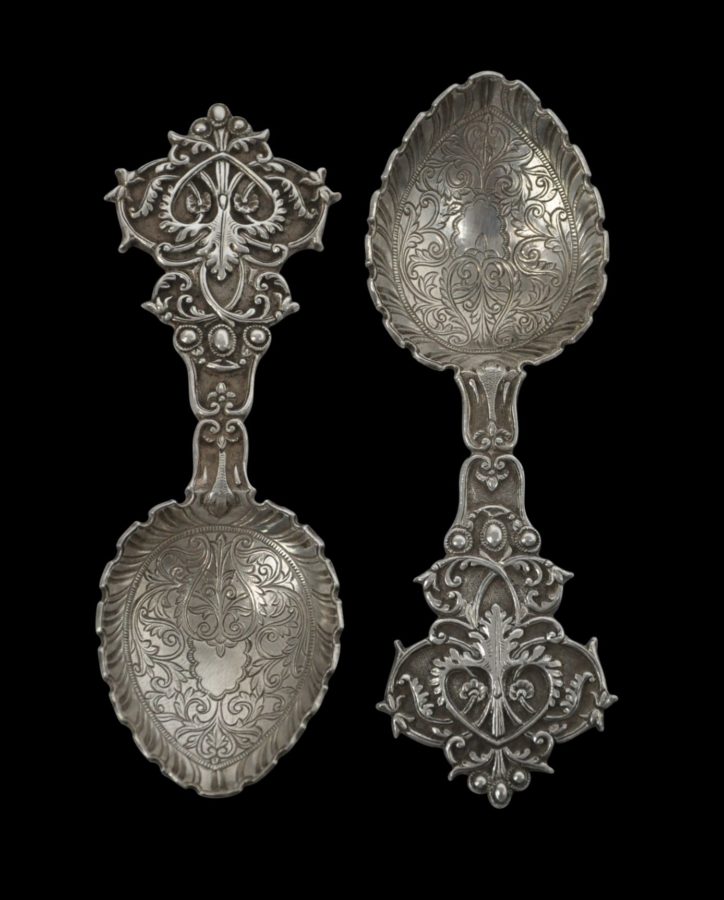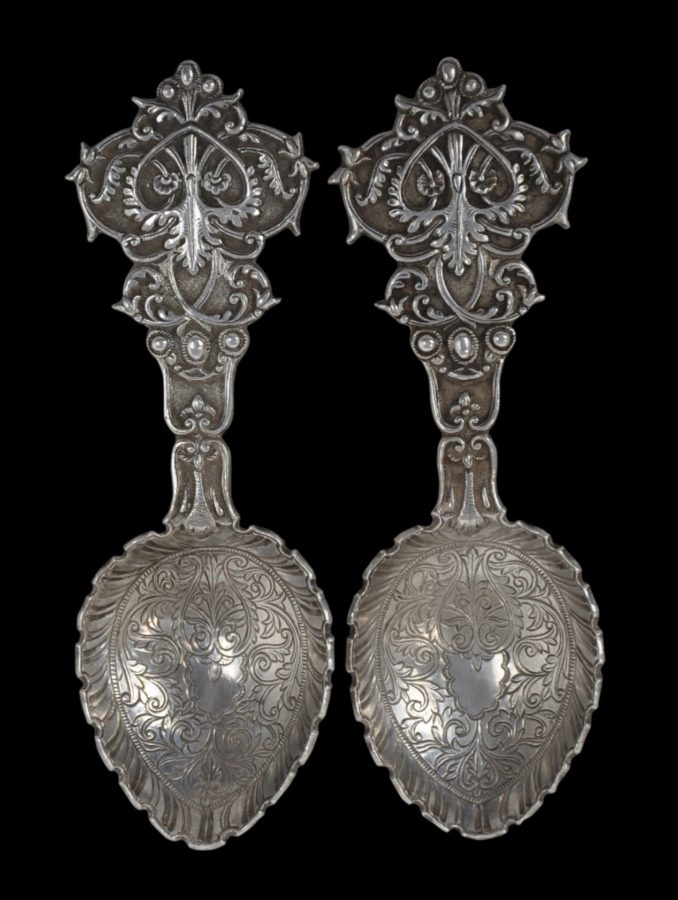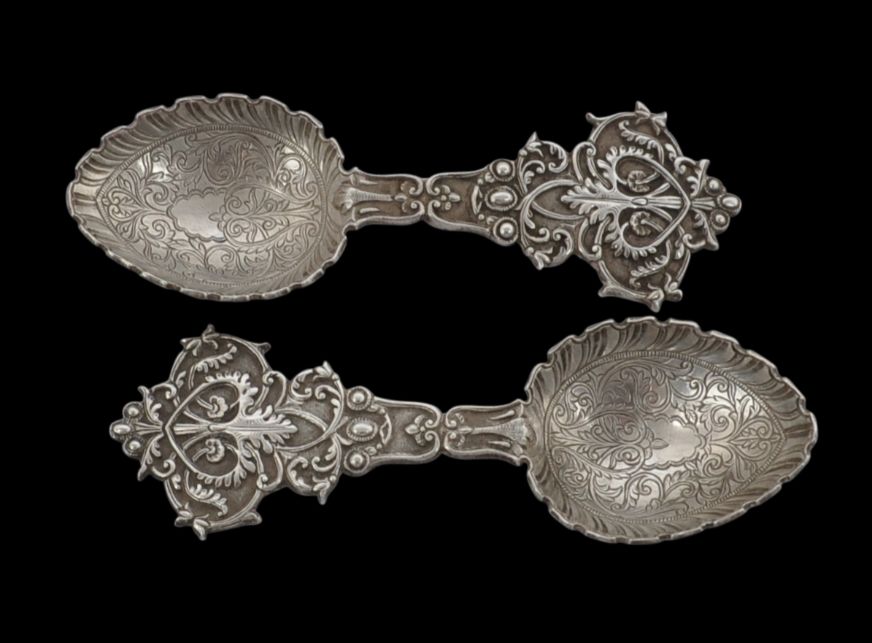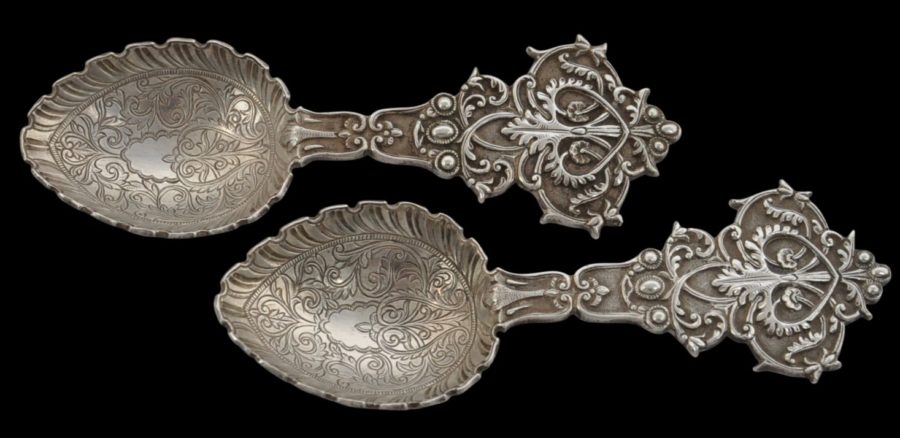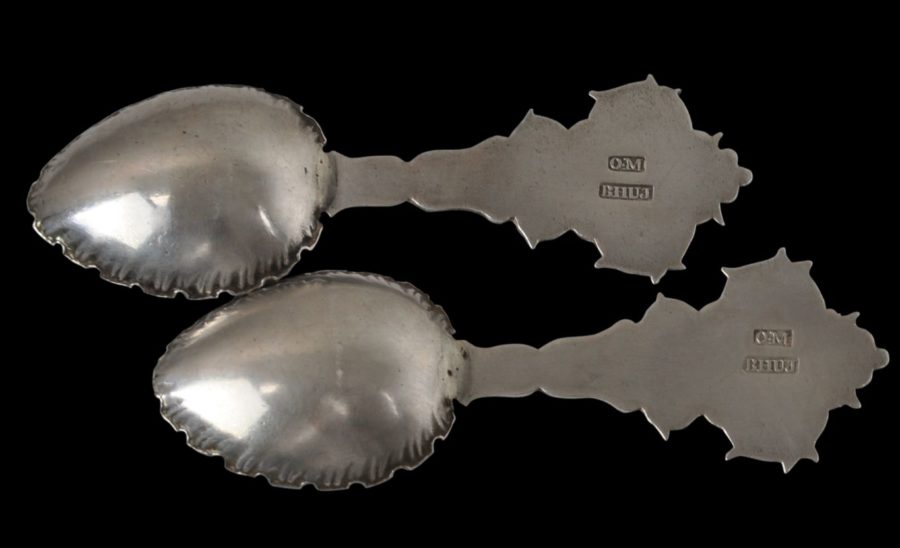Oomersi Mawji has become India’s most celebrated and sought after colonial-era silversmith, and this is the first time that we have seen silver caddy spoons by this maker.
The spoons feature wide handles that have been cast and chased in high relief with leafy, interlocking arabesques.
The bowls of the spoons are deep and engraved with more scrollwork. The edges of the bowls are crenulated
The reverse of each spoon is plain other than for the maker’s stamp. The stamps are well-cut ‘cameo’ punches that read ‘O.M’ and ‘BHUJ’. According to Wilkinson (1999, p. 90) stamps of this type are to be found on earlier work and are associated with Oomersi Mawji himself and were used during the period of his peak output of approximately 1860 to 1890, rather than say with his sons who took over the firm from around 1890.
Oomersi Mawji (OM) was the pre-eminent Indian silversmith of his time. He established a workshop in Kutch around 1860, where the local Muslim rulers, who had the title ‘Maharao’, were an important source of patronage. Today, pieces by OM are keenly sought by collectors and museums worldwide.
Kutch silvermakers such as Oomersi Mawji developed a unique style of motifs with which they decorated most of the silver items they produced. Islamic-inspired scrolling flowers and foliage is the most frequently encountered motif, but small animal, bird and human motifs also were employed. The inspiration for these intricate motifs combined with fine and complex floral and foliage patterns almost certainly derives from the local tradition of intricate wall painting employed in Kutch palaces and public buildings. Known as Kamaagar art, the style evolved among the Kamaagar community of Muslims who lived in Kamaagar Falia in Bhuj (Tyabji, 2006, p. 90). Initially, the community was known for making decorated shields, but by the early to mid 19th century, the Kamagaars had established themselves as wall painters, painting intricate, even fussy, scenes of village life, hunting scenes and the like accompanied by scrolling vegetal and floral borders.
This pair of caddy spoons is in excellent condition.
References
Dehejia, V., Delight in Design: Indian Silver for the Raj, Mapin, 2008.
Tyabji, A., Bhuj: Art, Architecture, History, Mapin, 2006.
Wilkinson, W.R.T., Indian Silver 1858-1947, 1999.


